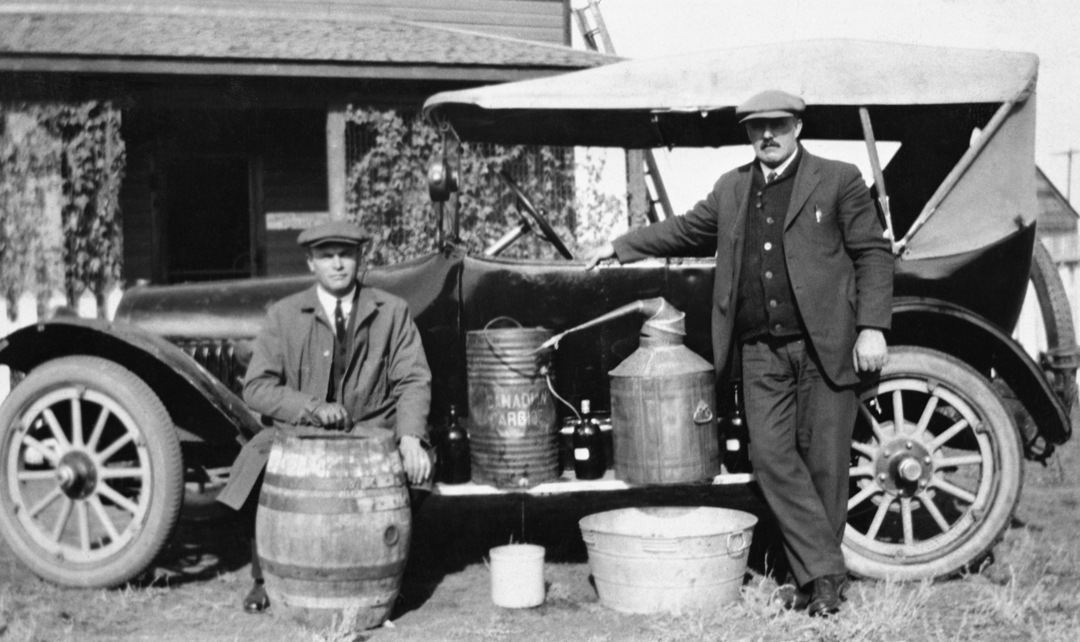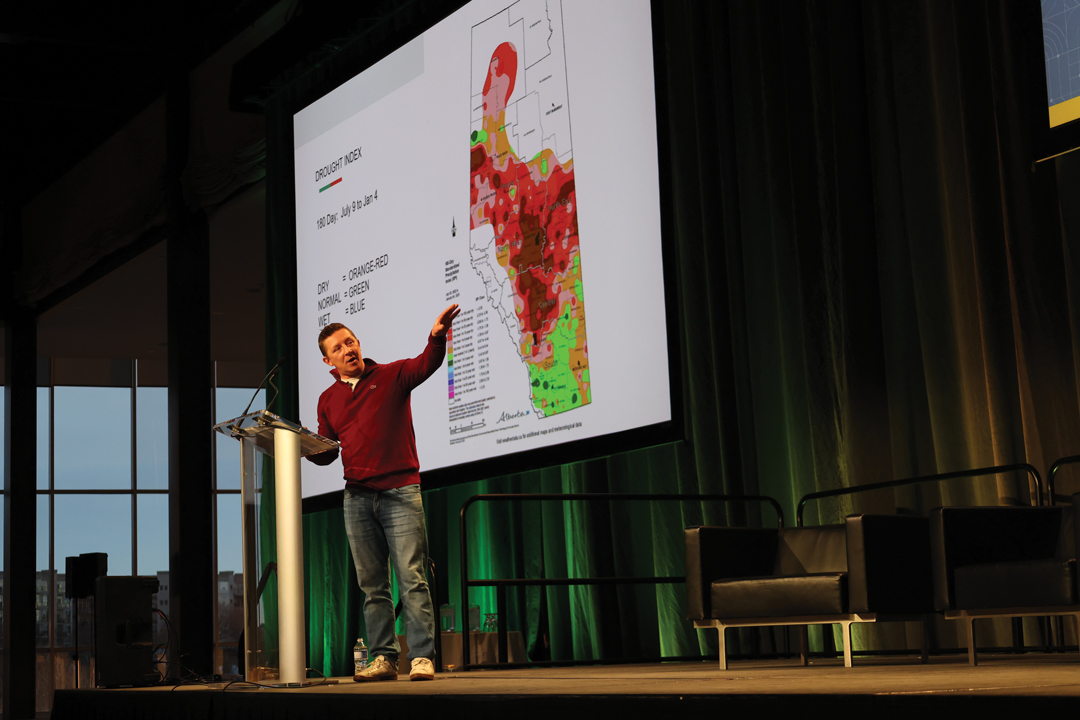AGAINST THE GRAIN
PROHIBITION PROFITEERS
While federal and provincial lawmakers tried for more than 50 years from the late 1800s to early 1900s to discourage the consumption of alcohol in Canada, referendums and legislation— often limited in scope—appeared to have only marginal success.
Demonstrating the truth of the adage “where there’s a will, there’s a way,” this moonshine operation in Irricana, just northeast of Calgary, was one of many home-based liquor setups. It was photographed in 1923, near the end of Alberta’s eight-year period of Prohibition.
After becoming a province in 1905, Alberta enacted a Prohibition law that was in force from July 1916 until May 1924. The law appeared to be relatively ineffective on many levels, as it contained several loopholes. People could still consume alcohol—it was the trade that was illegal. Even then, people could still buy low-alcohol beer, and alcohol could still be purchased for medicinal purposes, with prescriptions often written for 40-ounce doses.
It was also still legal for Albertans to buy alcohol from out of province, which prompted some entrepreneurs to develop lucrative export/import businesses. Calgary Malting and Brewing Co., for example, continued to produce beer that was trucked to Saskatchewan, with some brought back to Alberta under the guise of an out-of-province beverage.
Bootlegger, home-brew and secret moonshine operations were widespread across Alberta. At one Calgary church, the caretaker was found to be fermenting raisins in the choir loft, and at one of the largest illegal still operations in the city, the operator, George Packwood, was found with 70 gallons of fine Scotch whisky. As the operation was shut down, Packwood noted it was a very lucrative venture while it lasted: “Yes, I voted for Prohibition and I’d vote for it again. I went broke farming.”
As the Roaring ’20s were getting underway, the illegal sale of alcohol was widespread from many different sources. Along with bootleggers and illegal stills, it was estimated that in 1922 as many as 40 per cent of pool halls and 30 per cent of cafes were selling illegal alcohol.
In 1924, the illegal liquor smuggling and home-brewing trade in Alberta was reduced to a trickle after a successful referendum supporting the end of Prohibition. As a result, control of the liquor trade was given to the provincial government. Drinking was still discouraged, but the government would continue to manage legal alcohol distribution and sales until the system was privatized in 1993.








Comments